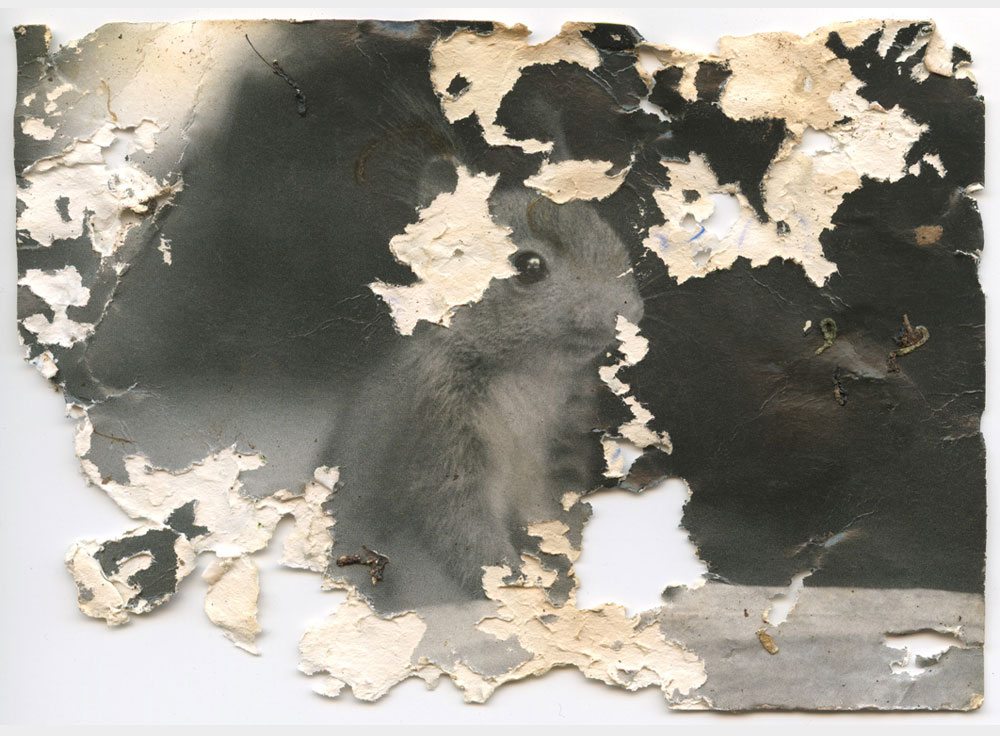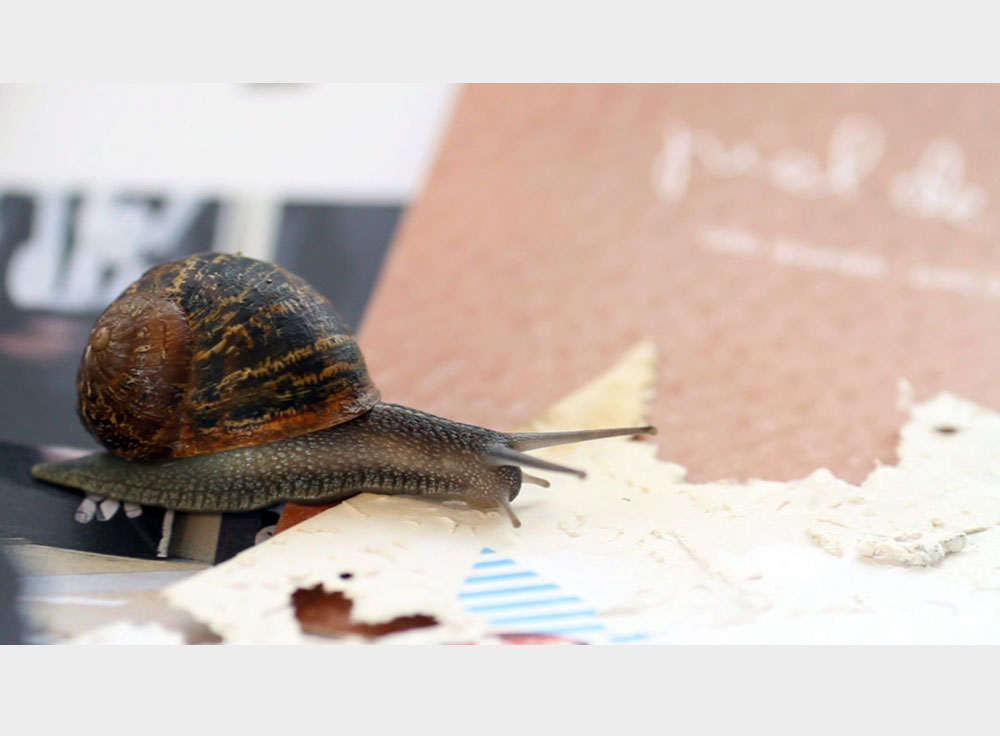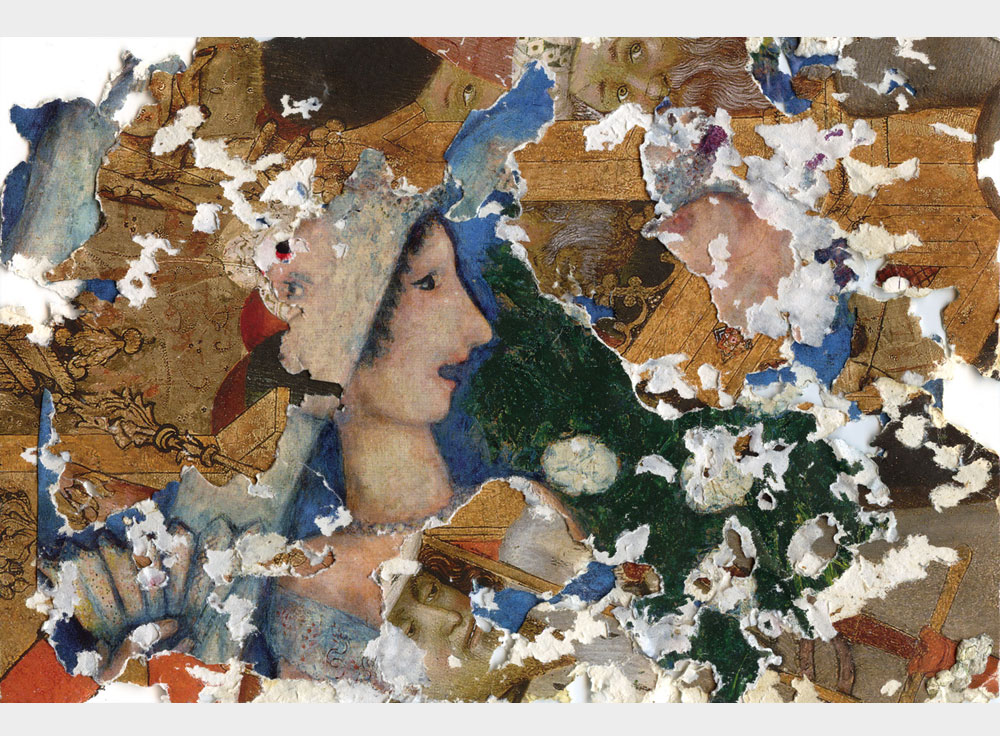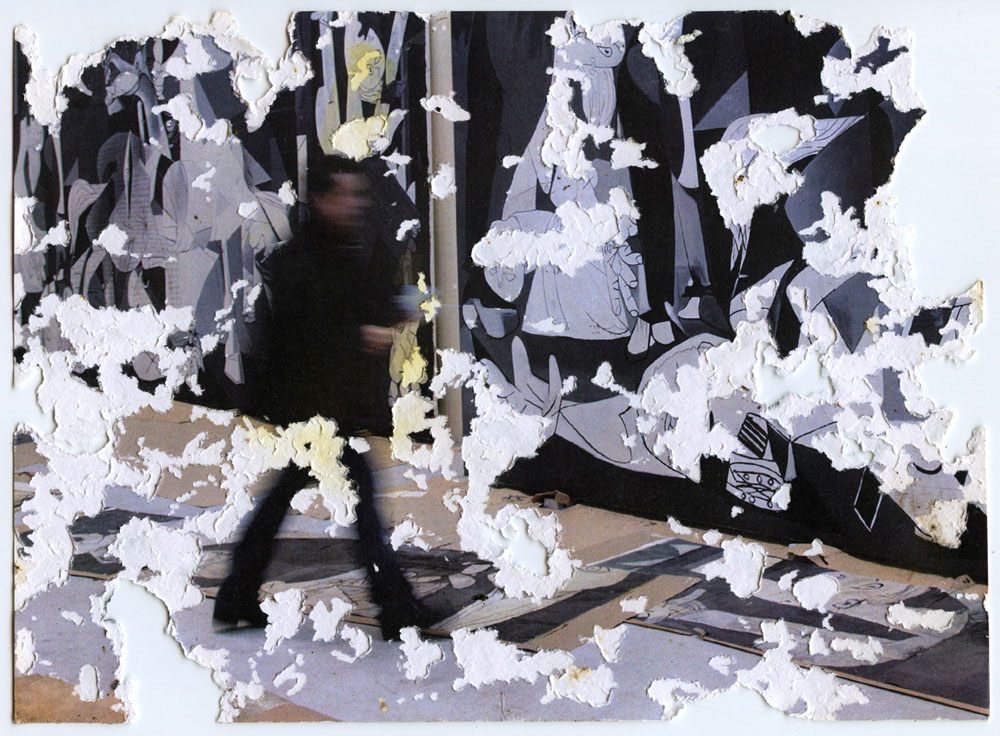Joan Fontcuberta, Gastropoda
The Life Cycle of Images
Whenever I come home after a few days’ absence, I find shagreen snails (Helix apersa, family of the gastropoda) eating into the paper and attacking the printed images in my mailbox. It occurred to me that images, like all living organisms, are born, grow and act, decay and die. And that is what Gastropoda is all about.
Gastropoda refers to iconic decomposition: the process of irreversible decay turns images into echoes of themselves which, as a result, reveal the aesthetics of horror and destruction.
The project also emphasizes the shift of the image as pure representation towards becoming an object, the transition from immaterial visual information into a physical object that contradicts the idea that the essence of an image derives from reality: images admittedly represent reality, but they are also tangible parts of that reality and you can photograph them as ‘object-images’.
The project finally questions the notion of ‘authorship’. Gastropoda inscribes itself in the tradition of ‘animal-made photography’: snails have been accomplices in my work and therefore share its ‘authorship’. The snails have, in fact, been the true authors: I have done little more than exploit their capacities. Unlike similar past practises, in which artists exploited the capacities of ‘human accomplices’, the “co-authors” here were hungry snails which are entirely unconcerned about the ideas and meanings we attribute to their voracity and excrements. After all, they simply consumed the images in order to complete their own life cycle.
Joan Fontcuberta






